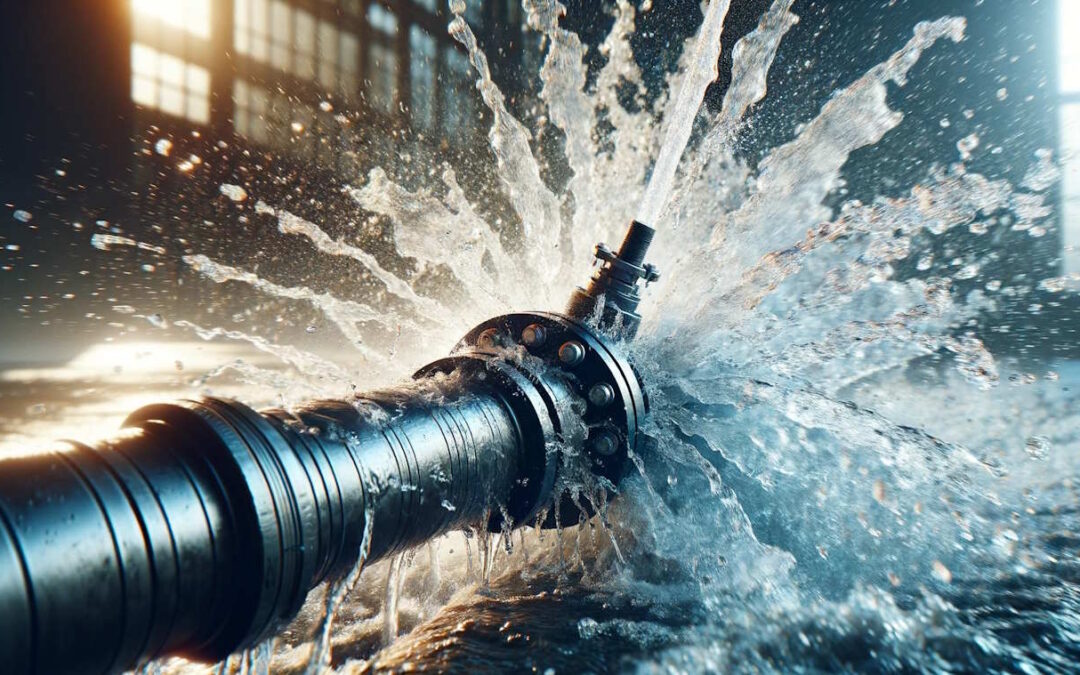Ingenious Solutions for Early Discovery of Water Leaks in Buildings and Framework
From innovative leakage detection technologies to the implementation of IoT sensing units for real-time monitoring, the landscape of leak avoidance is progressing rapidly. Automated water circulation analysis systems are improving just how leakages are recognized and resolved, paving the way for a proactive approach to water leakage detection.
Advanced Leak Discovery Technologies
Advanced leakage discovery modern technologies, furnished with sophisticated sensing units and formulas, play a critical role in quickly identifying and pinpointing water leaks in different setups. These technologies employ a combination of acoustic, thermal, and electro-magnetic picking up methods to detect leakages precisely. Acoustic sensing units detect the audio of getting away water, enabling exact localization of the leak source. Thermal imaging detects temperature level changes brought on by water leak, giving an additional reliable method for leakage identification. Electro-magnetic sensing units can recognize changes in electro-magnetic areas triggered by water, using yet an additional layer of leak detection capacity.

IoT Sensors for Real-Time Surveillance
In the world of modern water leakage discovery, the combination of IoT sensors for real-time monitoring stands for a critical innovation in enhancing aggressive leak discovery abilities. These sensors offer constant tracking of water systems, supplying real-time data on water flow prices, stress variants, and temperature level modifications. By leveraging IoT technology, these sensing units can identify also the smallest anomalies in water usage patterns, enabling very early recognition of potential leaks prior to they rise into major problems.
IoT sensors send data to a central platform, where advanced algorithms evaluate the info and produce notifies or alerts when irregularities are discovered. This real-time monitoring capacity permits property proprietors or facility managers to immediately address leaks, lessening water damage, decreasing repair work costs, and preserving water sources.
Moreover, IoT sensing units can be integrated with structure administration systems, permitting computerized reactions to spotted leaks, such as shutting off water shutoffs or triggering pumps to minimize the impact of leakages. Overall, the implementation of IoT sensors for real-time tracking significantly enhances the efficiency and efficiency of water leakage detection in buildings and infrastructure.
Artificial Intelligence Algorithms for Leak Forecast

One key other advantage of utilizing artificial intelligence for leakage prediction is its capacity to continuously discover and enhance its accuracy in time. As even more data is collected and fed into the algorithm, it can fine-tune its predictions and adapt to altering conditions, inevitably enhancing the integrity of leak detection systems.
In addition, equipment discovering algorithms can help in identifying refined indications of leakages that might go undetected by conventional tracking approaches. water leak detection. By examining complex data collections in real-time, these algorithms can give very early cautions and notifies, enabling prompt treatment and preventive maintenance to alleviate prospective water damage and linked expenses
Making Use Of Thermal Imaging for Leak Detection
Thermal imaging technology supplies an encouraging strategy for finding water leaks in various systems and infrastructures. By utilizing infrared radiation and temperature level variances, thermal imaging electronic cameras can recognize surprise leaks that are not conveniently visible to additional resources the naked eye. When water gets away from pipes or structures, it typically alters the temperature level of the bordering area, producing temperature level differentials that thermal cameras can capture. These temperature abnormalities are then converted into noticeable photos, highlighting the exact area of the leakage.
One of the essential benefits of thermal imaging for leakage detection is its non-intrusive nature. On the whole, the usage of thermal imaging innovation improves the effectiveness and accuracy of water leakage discovery, making it an important device for preserving the integrity of structures and infrastructures.
Automated Water Flow Analysis Equipments
How can automated water flow evaluation systems revolutionize the detection and management of leakages in numerous systems and infrastructures? Automated water circulation evaluation systems supply a proactive technique to leak discovery by continually monitoring water circulation prices and patterns. By developing standard information, these systems can promptly determine deviations that may suggest a leak, allowing timely treatment to avoid substantial damage.
These systems make use of innovative algorithms to evaluate real-time data and give instant alerts when anomalies are detected, allowing for swift activity to be taken. Furthermore, automatic water flow analysis systems can be integrated with building monitoring systems or IoT systems, enhancing general performance and making it possible for remote monitoring capacities.
Furthermore, the information accumulated by these systems can be utilized for anticipating upkeep functions, aiding to determine potential weak points next page in the infrastructure prior to leaks occur. Overall, the execution of computerized water circulation analysis systems can dramatically improve leakage discovery and management methods, ultimately leading to set you back savings, lowered water wastage, and boosted sustainability in structures and framework.

Conclusion
Finally, the combination of sophisticated leak detection innovations, IoT sensing units, artificial intelligence formulas, thermal imaging, and automated water circulation evaluation systems uses cutting-edge options for early discovery of water leakages in structures and infrastructure. These technologies allow real-time tracking, forecast of leaks, and effective detection approaches to avoid water damage and wastefulness. Carrying out these solutions can help in preserving the integrity and sustainability of water systems in various setups.